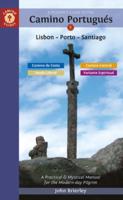Publisher's Synopsis
The roots of the Georgian people extend deep in history and their cultural heritage is rich. The ancient kingdoms of Colchis and Kartli-Iberia occupied the region of present-day Georgia. The dominion of the Roman Empire extended to the area in the first centuries A.D. and Christianity became the state religion in the fourth century. The Roman period was followed by domination by Persians, Arabs, and Turks. A powerful Georgian kingdom arose during the 11th-13th centuries, but this "golden age" was cut short by the Tamerlane's Mongol invasion in 1236. In the centuries that followed, the Ottoman and Persian empires competed for influence in the region. Not long after establishing an alliance to throw off the domination of the Ottoman Empire, Georgia was annexed by the Russian Empire early in the 19th century. Following the Russian revolution, an independent Georgian state existed briefly from 1918-21, when it was forcibly incorporated into the Soviet Union. In 1936, Georgia became a constituent republic of the Soviet Union. One of the most independence-minded republics, Georgia declared sovereignty in November 1989 and independence in April 1991. The 1990s marked a period of instability and civil unrest in Georgia. The first post-independence government was overthrown when separatist movements emerged in South Ossetia and Abkhazia. By the mid-1990s, tentative cease-fires were in effect, although separatist sentiment in the two regions remained high. By the end of 1998, about 280,000 people had been internally displaced in Georgia. The majority were ethnic Georgians from Abkhazia and South Ossetia. About 10,000 ethnic Georgians from South Ossetia lived in government-controlled areas, while about 4,000 people remained displaced within South Ossetia. Almost half of Georgia's displaced population lived in the Samegrelo region adjacent to Abkhazia, followed by the Tbilisi and Imereti regions. Renewed fighting in the Gali district of Abkhazia displaced another 40,000 persons, most of whom fled to the Samegrelo region. In November 2003, attempts by the incumbent Georgian government to manipulate national legislative elections led to widespread protests and demonstrations, which came to be known as the Rose Revolution. The resignation of Eduard Shevardnadze, president since 1995, soon followed and new elections were held in early 2004. Mikheil Saakashvili, the charismatic leader of the Rose Revolution, was swept into power, along with his National Movement Party. Saakashvili was re-elected to a second presidential term in January 2008. Although significant progress was made on market reforms and democratization in the years since independence, this progress has been complicated by Russian assistance and support to the breakaway regions of Abkhazia and South Ossetia.











